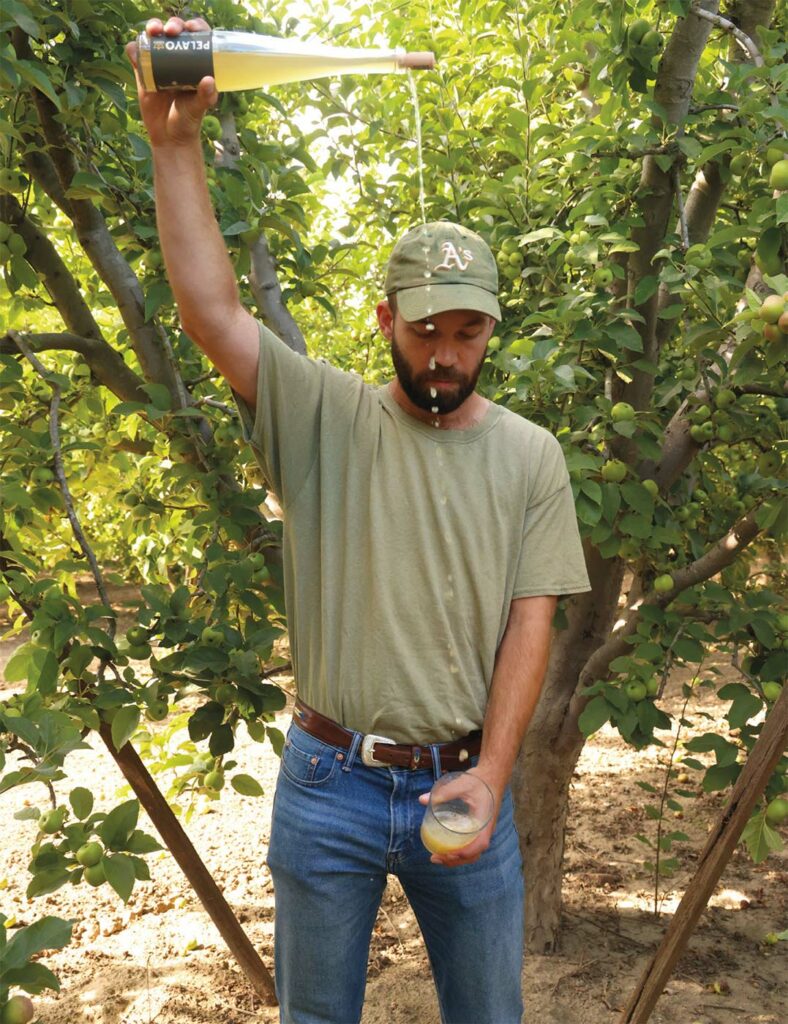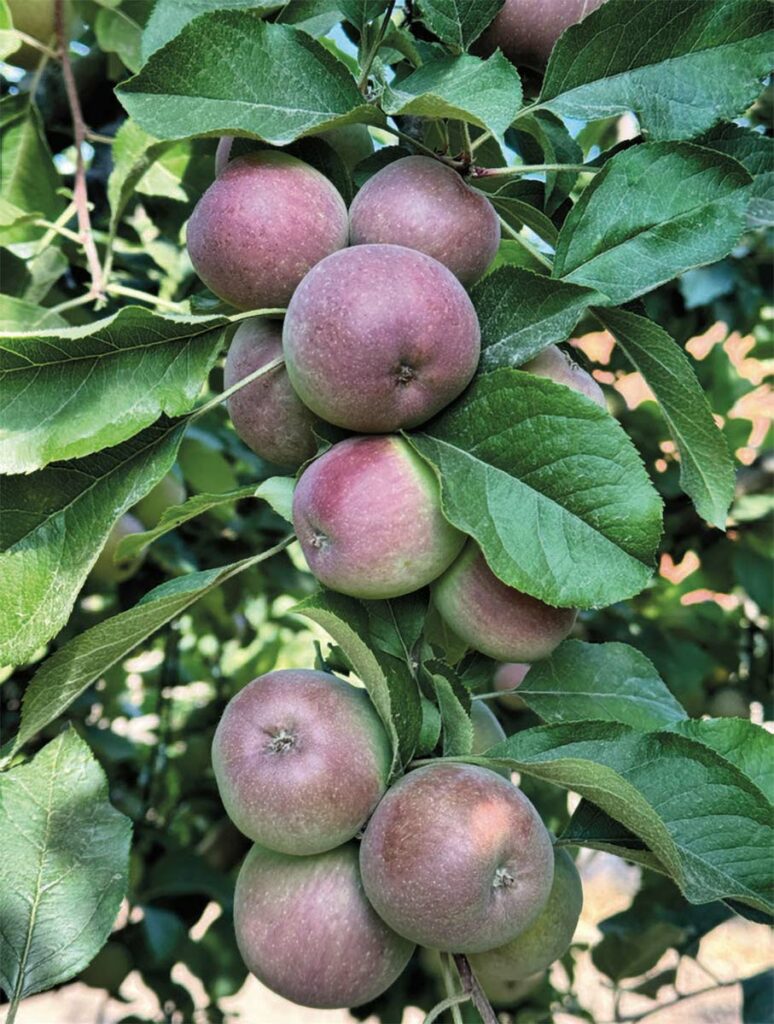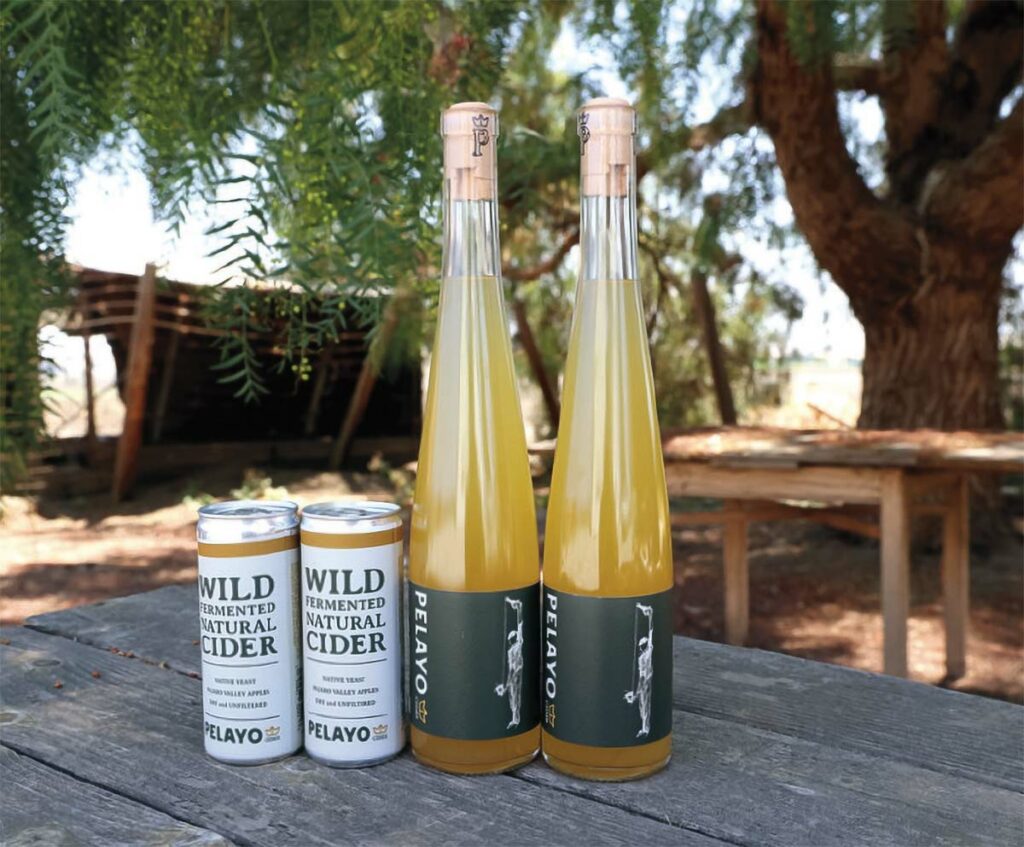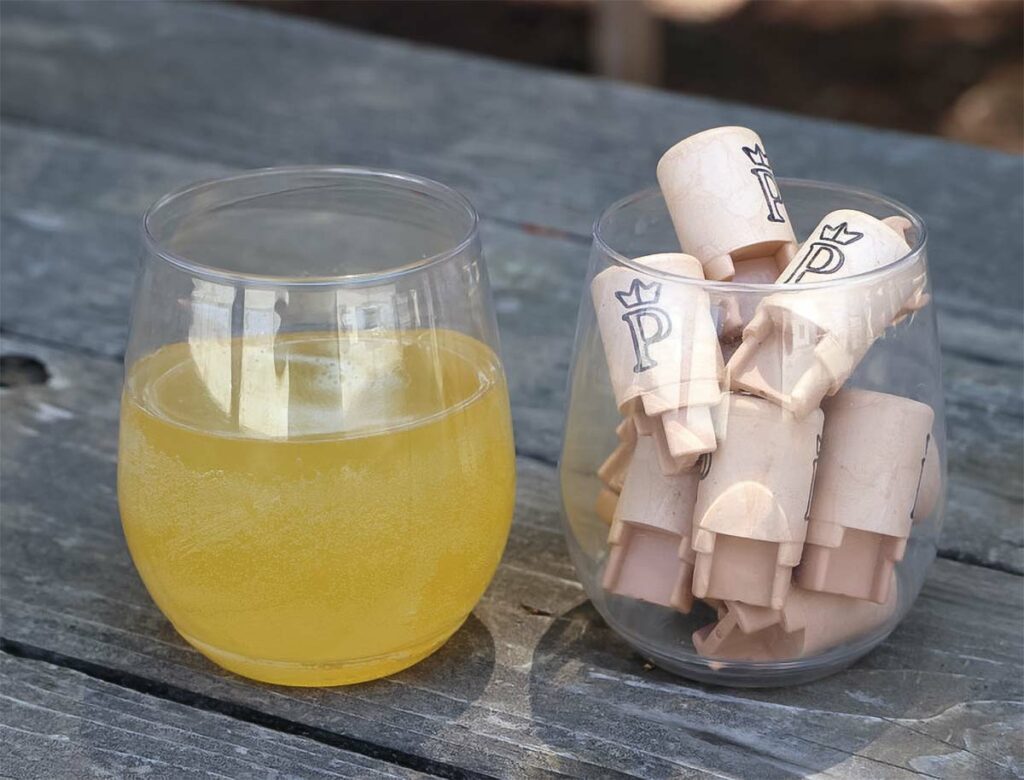
Pelayo Cider brings an ancient Asturian tradition to Hollister
PHOTOGRAPHY BY ROBERT ELIASON
Though Anthony Copriviza has had a lifelong connection to his family’s 120-year-old Watsonville apple orchard, the idea of making traditional hard ciders never entered his mind until he and his wife Natalie traveled to the Asturias region of Spain and visited his first sidreria, or cider bar.
“We went to Asturias because we were told it was beautiful,” Copriviza says. “Cider wasn’t even a huge thing on our radar. I was never a fan of hard ciders—I was mostly exposed to sweet carbonated ciders, which I thought all ciders were.”
That all changed when the couple visited Restaurante Sidrería La Galana in Gijón in 2015, where they experienced true Asturian cider— and the rituals connected to it—for the first time, which led to the founding of Hollister’s Pelayo Cider.
“There were mostly older Spanish men there,” he recalls. “I remember going up to the bar and ordering a bottle. Usually, they give a group only one glass because they have a cultural thing about sharing, but they gave us two.”
The cider was uncorked, and the server held the glasses at about belt buckle height. With the bottle raised above his head, the server “threw” the cider into the glasses, pouring in a thin but accurate stream.
“They use really wide-mouth glasses,” Copriviza says. “They’d hold both glasses together in one hand and pour into each, giving it to Natalie first. It’s a couple of ounces and you are supposed to put it back like a shot.”
Traditionally, the drinker is supposed to leave a small amount of cider in the glass, which is poured onto the floor, meant to freshen the glass when only one is shared by a group.
“After you down it, you wait, trying to make eye contact, until they ask if you want another pour,” Copriviza says. “We must have drunk three or four bottles that night because we were so enthralled by everything.”
A student of Spanish, he peppered the owners with questions about what kind of apples were used and how the cider was produced.
“One of the things they would tell us is, it’s just apples,” he says. “And they would say, with a sense of pride, ‘There’s nothing else in there.’”
The Coprivizas spent the next two years discovering everything they could about cider-making before returning to the United States in 2017. They were determined to give it a try, and produced 10 gallons their first year.

A student of Spanish, he peppered the owners with questions about what kind of apples were used and how the cider was produced.

The process for making Asturian cider is ancient, first mentioned in Geographica by the 1st Century historian Strabo. He wrote of the Iberian people, “Zytho etiam utuntur: vini parum habent”—“They drink cider because they have little wine.”
It is also a relatively simple process compared to making wine or beer. Apples are harvested when ripe, washed and left uncovered in a barn for around two weeks until they sweat.
“With our first batch, we were worried about washing them, thinking it would remove all the yeast,” he says. “But we were also worried about contaminants, so we probably washed each apple by hand.”
After the apples sweat, they are washed again, crushed and left in open tubs for two more days, then pressed to extract every drop of juice. The last squeeze produces a dark juice that imbues the cider with a muskiness similar to a pétillant naturel wine.
They source apples from an orchard founded in 1900 by Copriviza’s great-great-grandfather, Croatian immigrant Peter P. Stolich. For decades, he and his son Peter L. Stolich shipped apples around the country before Martinelli’s started buying the entire crop for its cider and juice. In 2022, the Coprivizas went into commercial production, making 250 gallons. They named the cider “Pelayo” after the first king and founder of Asturias and Calle Pelayo, the street in Madrid where they lived for three years.
Now in its third year, Pelayo has increased annual production to 1,000 gallons, making two versions: Pelayo Cider in 250 ml cans and Pelayo Cider Reserve in 500 ml bottles. Both are made using the same blend of apples, including Newtown pippin, Fuji, gravenstein, Mutsu, bellflower, winesap and black twig, but the reserve has a higher proportion of Newtown pippin and is aged longer.

“The cans are an entry-level, more approachable style of cider,” Copriviza says. f “It’s lighter and more apple forward. The reserve is closer to the Spanish style, with more salinity and acid. It’s tangier with more musk and depth.”
The bottled version has a special cider cork manufactured in the Basque country. It is slotted along one-third of its lower length, allowing it to be pulled out just far enough to help the cider flow in a thin stream. Think of it as training wheels for the beginner cider thrower; the special corks allow the cider to be poured from a good height without spilling liquid everywhere.
With limited production, Copriviza distributes his cider mostly in San Francisco, Palo Alto, Santa Cruz, Aptos and Capitola.
“The Asturian style of cider is often very local,” he said. “Asturias produces 80% of Spain’s cider, and 90% never leaves the borders. So, for now, we’re happy with producing and selling it within the state, just sharing it with the people here.”
Hollister’s Crave Wine Bar carries Pelayo cider, and owner Mike Kohne is an enthusiastic supporter.
“A few words into our first conversation,” Kohne says, “I could tell we had to carry his ciders. He’s passionate about making this natural cider, and the ties to his family’s agricultural history are compelling.”
While Crave carries other ciders, Kohne finds Pelayo to be the most revelatory. “It is fragrant but akin to fine wine,” he says. “It is super dry, and there is always something new in the bouquet as it opens up. Once broken, it shows almost an effervescent and unique texture filled with nuance.”
Looking to the future, Copriviza has planted a small orchard that includes Newtown pippins, Fujis, granny Smiths and Ribston pippins next to his Hollister production facility. He hopes someday to open a sidreria of his own to bring the entire Asturian experience closer to home.
“We would like to find a way to make this every year and make enough money so it is worth our time,” Copriviza says. “We want to keep enjoying it and making this cider for the rest of our lives. That’s our plan.”
About the author
Robert Eliason is a documentary photographer and photojournalist and has been based in San Juan Bautista for the last 12 years. Recently he has been doing extensive reporting on the wineries, breweries and specialty food companies of San Benito County, and is documenting the history of the Cienega Valley wine region.
- Robert Eliasonhttps://www.ediblemontereybay.com/author/kfeldmanklein/
- Robert Eliasonhttps://www.ediblemontereybay.com/author/kfeldmanklein/
- Robert Eliasonhttps://www.ediblemontereybay.com/author/kfeldmanklein/
- Robert Eliasonhttps://www.ediblemontereybay.com/author/kfeldmanklein/



